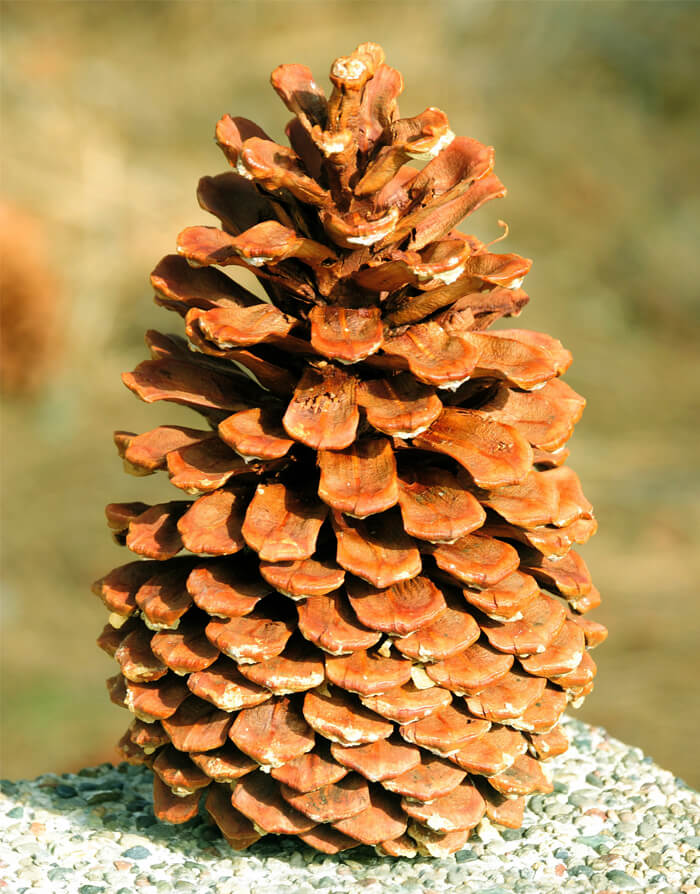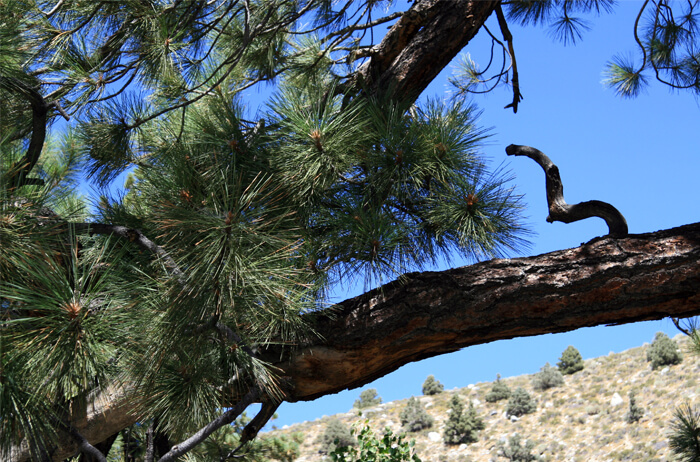Jeffrey PinePinus jeffreyi landscapeconiferdrought tolerantwestern nativecold tolerantevergreendeer resistantheat tolerantpopular Christmas tree species
Height: 30' average mature height Hardiness Zones: 5-8 Find my zone Aspect: half shade to full sun
This plant can't be shipped to California, Hawaii, Montana
Size Availability
10 to 12 inches tall - $8.50 each
Bulk Pricing: $7.99 each for 5 or more - 6% off Bulk Pricing: $6.99 each for 10 or more - 18% off Bulk Pricing: $5.99 each for 20 or more - 30% off
Ships free with orders of $75!Packed with a bagged root ball.
The Jeffrey Pine looks similar to the closely related Ponderosa Pine, and the two share a wide range overlap in southern Oregon and northern California. The major difference between the two is that Jeffrey Pines are much tougher and look healthy even in very harsh conditions. It is one of the few pines that can thrive in soils high in copper, chrome, magnesium, and nickel but low levels of calcium like the serpentine soils in Oregon's Siskiyou Mountains. Trees will also thrive in free draining slopes made of volcanic cinders where very few other species would grow, or in nearly solid granite slopes. The thick trunk and branches are strong and stand up well to snow and wind in extreme northern or high elevation locations, and the roots grow thick and deep to protect the tree from blowing over.
Jeffrey Pines will also grow quite well in normal growing conditions and make an excellent landscape plant, but if you have a particularly hard site where few other trees will grow this is an excellent choice.
A strong vanilla scent is produced whenever loose flakes of bark are pulled from the trunk or branches and the aroma is present when standing in a grove of trees on a still, sunny day. The bark looks flakier than the bark from a Ponderosa Pine with fewer large fissures and lacking the orange tones present in older Ponderosa Pines. Jeffrey Pines also produce much larger cones than Ponderosa Pines - in fact the cones can be up to a foot tall and eight inches wide when fully opened. Before the cones are fully ripe and start to open they are shaped just like a pineapple.
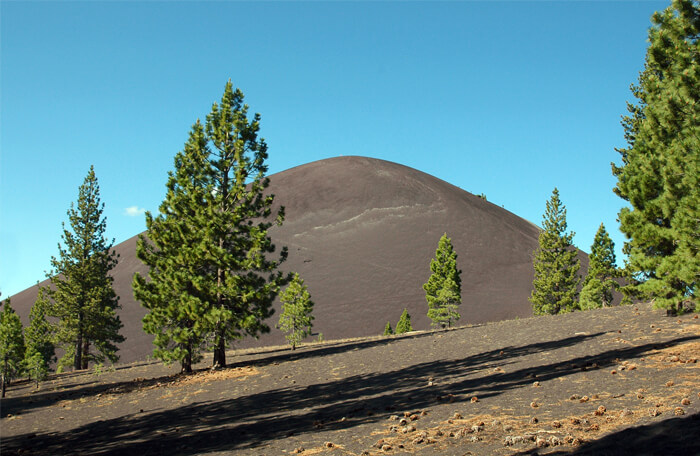
Jeffrey Pines will grow well even in harsh landscapes that support little other plant life.
Source:
Commons
.
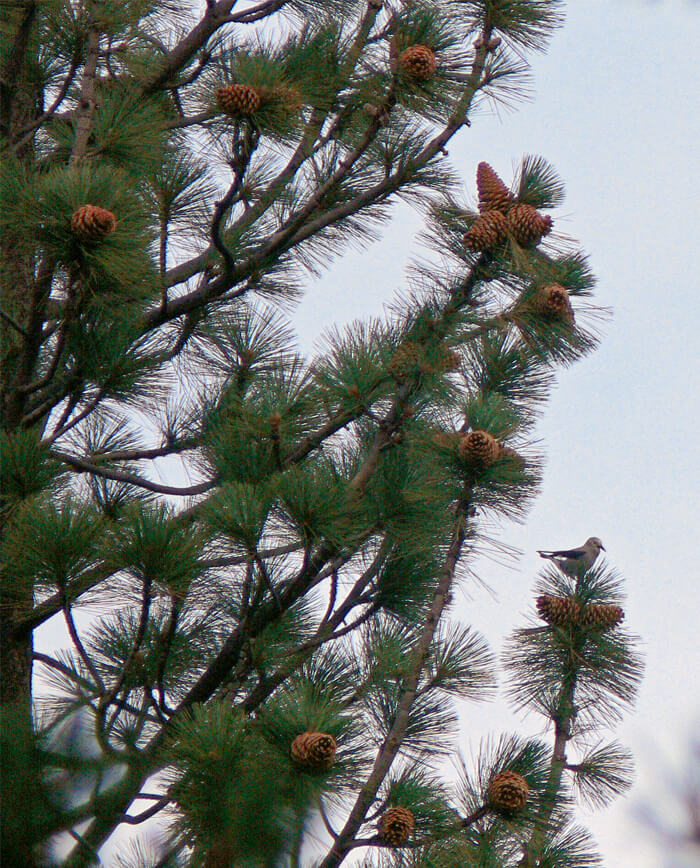
Cones persist on the tree for several years and the seeds provide winter food for birds.
Source:
Commons
.
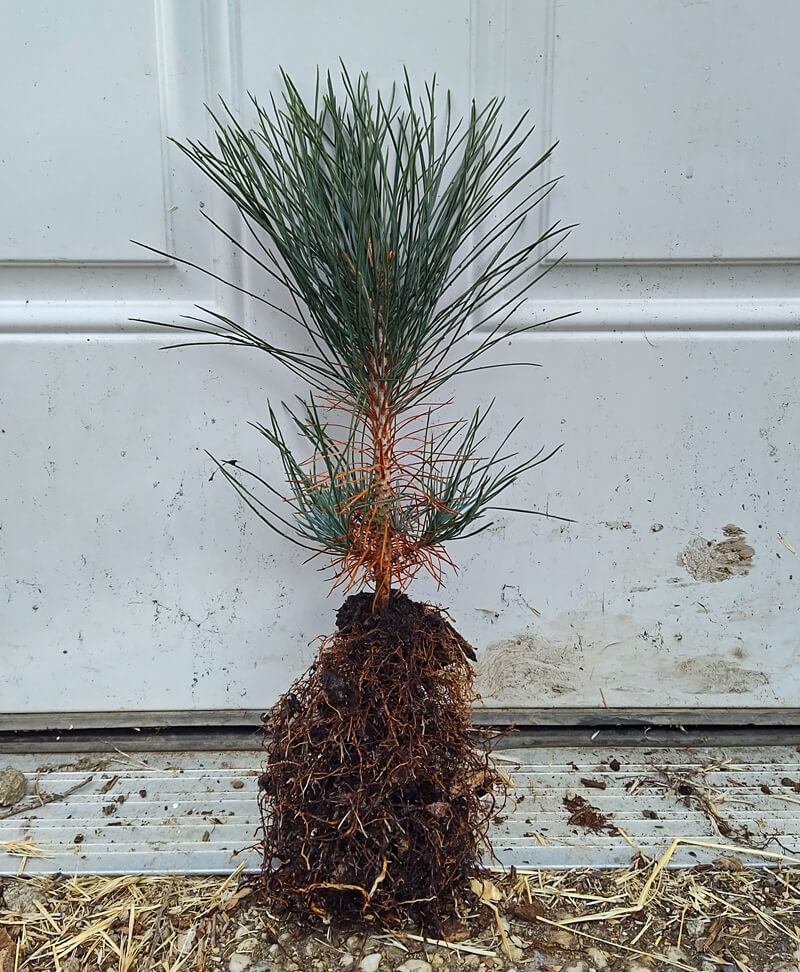
Pinus jeffreyi - Jeffrey Pine quart size tree
Packing Plants For ShippingMost of our plants are shipped bare root while they are dormant from late November through April and ship via the U.S. Postal Service. Bamboo plants can be shipped in their containers year-round by UPS.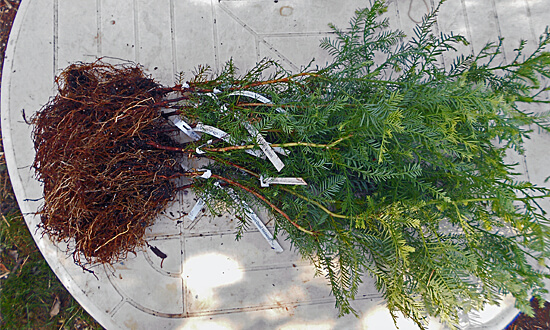 Bare root plants are soaked and wrapped together in bundles. ictured are 10x 24 inch tall Coast Redwoods. 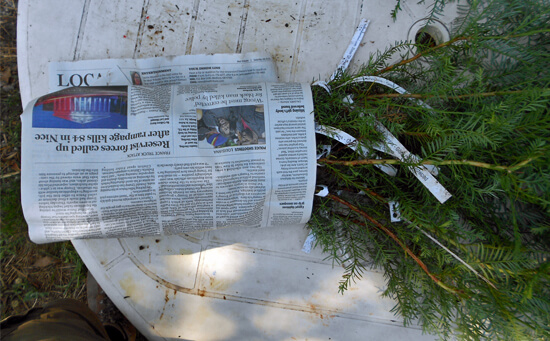 The bundled plants are wrapped in paper and labeled by variety. 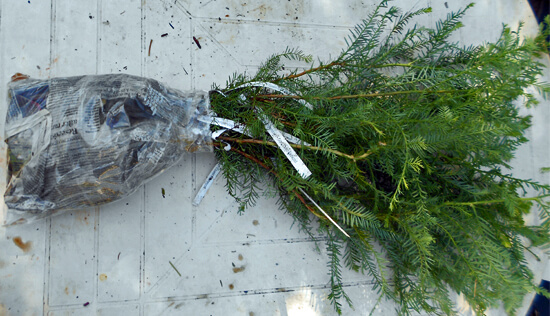 The bundle is wetted and bagged. 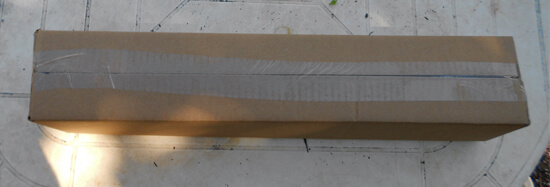 Bundles of plants are secured in long boxes. Pruning and Plant SizesWe prune both the tops and the roots of our plants at least once per year while they are growing in our nursery to ensure they develop a strong, dense form. Regular annual pruning goes a long way to ensure a healthy branching structure and this is often a missed step in many nurseries. Pruning a plant back hard after it has been neglected pruning-wise often results in an irregular branch habit or multiple leaders so we prune early and regularly instead. We also prune the roots of our plants while they are dormant which causes them to produce a much more branched structure and helps to elimate tangled masses that hinder future development. Plants that have been root pruned establish themselves much more quickly than root bound plants. Generally, hardwood plants will be pruned in the winter and conifers will be pruned in the summer.Before shipping plants we prune the tops and roots one last time. Conifers will usually have very little pruning except to balance out long branches. Shrubs are usually pruned to around 1-2 feet tall to encourage low branch development and small to medium sized trees are usually pruned to around 36-40 inches. Pruning trees at this height encourages dominant branches to begin forming around 3 feet from the ground which typically looks the best in most situations. However, if you want a tree to have branching start higher (some city codes require trees to not branch below 4 feet) we have longer boxes available. To request taller trees please contact us at least three days before your ship date. Depending on your location and the shipping routes there may be a fee for oversize package handling (usually about $15 for a 60 inch box). 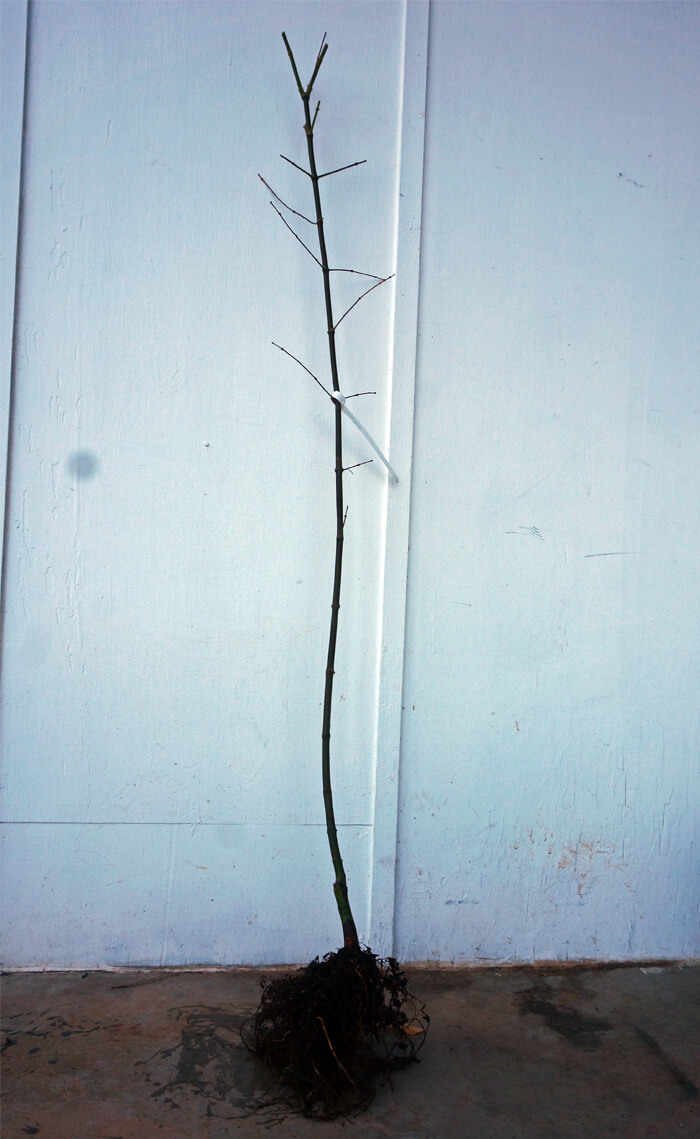 Tall trees (Oaks, Ginkgo, large Maples, etc.) are pruned to 40 inches to encourage crown development from about 36 inches and up 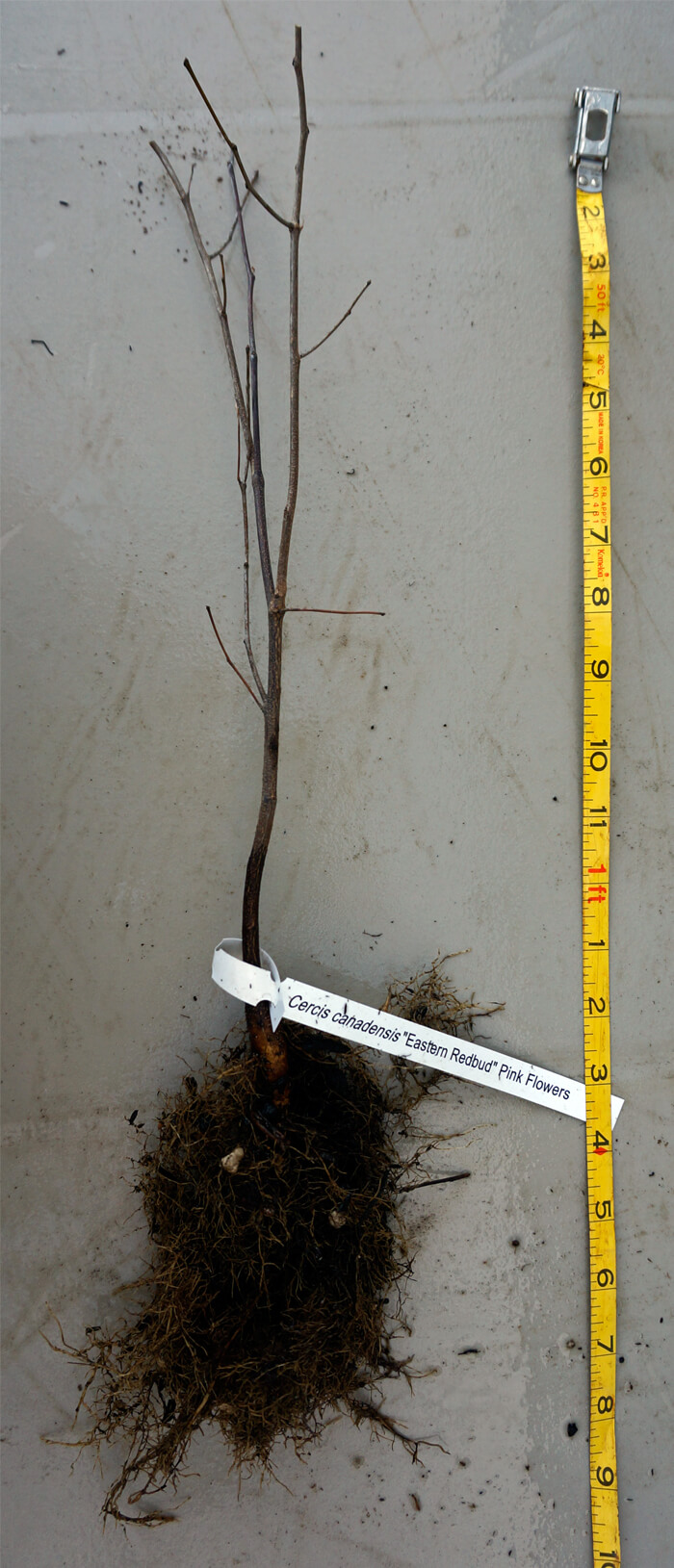 Small and medium trees (short Maples, Redbuds, Stewartia, etc.) are pruned 10-20 inches above the prune line from last year 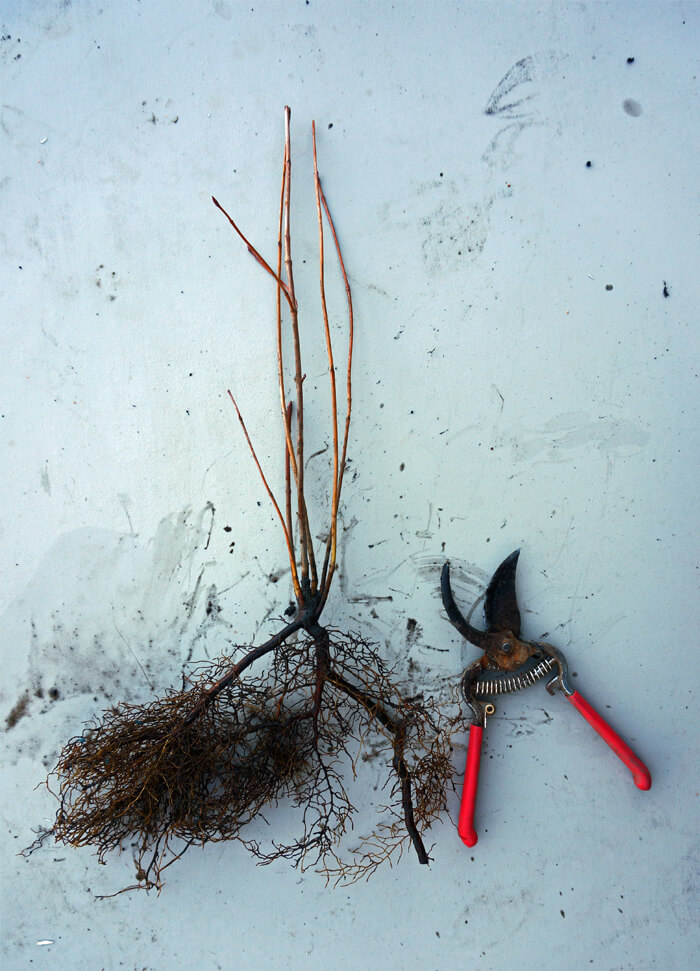 Shrubs (Weigela, Hydrangea, Viburnum, etc.) are pruned to 18 inches tall and root pruned one last time 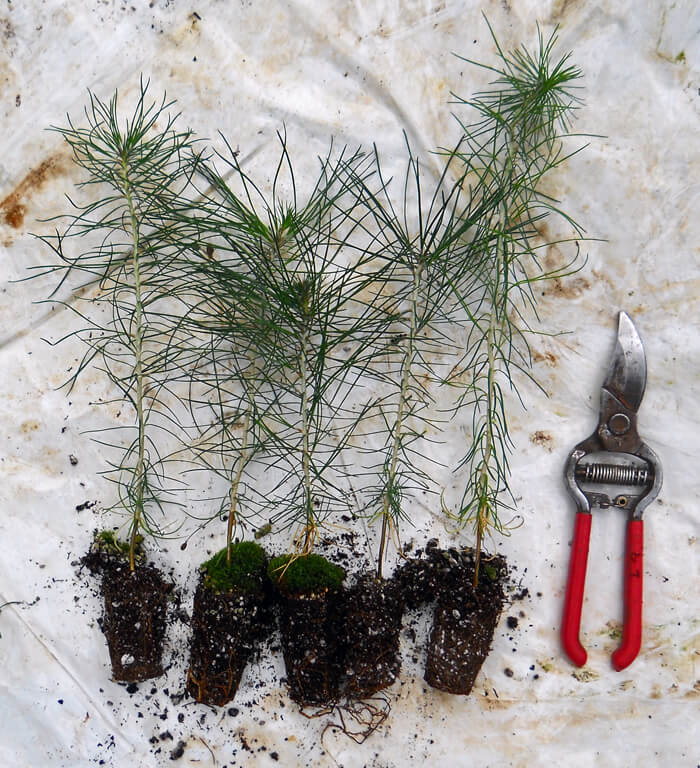 Small plug size Bamboo Plants Are Shipped In Their ContainersBamboo roots are not flexible and so plants have to be shipped in their containers. These plants are heavier and are shipped separately from bare root plants. Because they are potted they can handle longer transit times so can ship via UPS Ground instead of USPS Air Mail. Potted plants can also be shipped year-round.We regularly top our 1 gallon bamboo plants at 24-30 inches tall throughout the growing season. This results in dense, bushy foliage while allowing for economical shipping. From this size most running species will grow to 5-6 feet tall in the first spring and clumping species will usually grow to 4-5 feet tall.  1 gallon bamboo plants strapped in and ready to be sealed. Unpacking Bare Root PlantsYou will be sent tracking details as soon as your plants are shipped. Unpack your plants as quickly as possible after they are delivered. We use two types of boxes, side-sealing and top-sealing. For boxes that are taped along the whole length you can cut the tape on either side and remove the plant bundles by cutting the tape holding the bundle to the bottom. For boxes that are sealed on the top and bottom, it is easiet to open the bottom of the box (the shipping label is at the top) and pull the bundle of plants out straight out. Check that the box is empty as there can be a second bundle of plants stuck towards the top.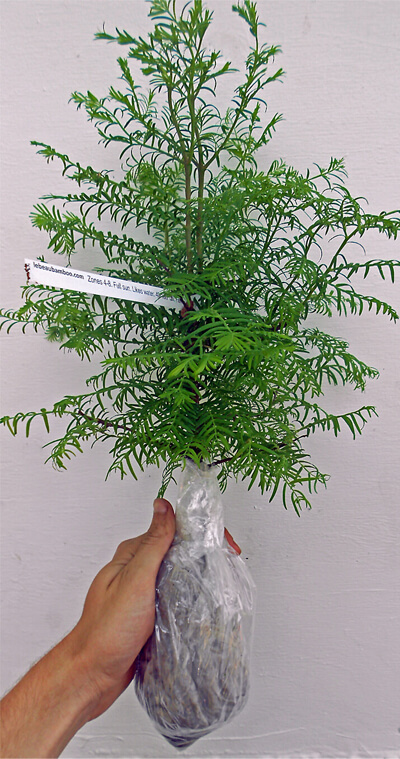 A bundle of trees. What if I am not able to plant right away?You can usually leave the plants in their shipping container unopened for 1-2 days if there were no shipping delays and you have received your plants from late November through February. Plants shipped when it is warmer can't stay in their packages for as long. |
Size Availability
10 to 12 inches tall - $8.50 each
Bulk Pricing: $7.99 each for 5 or more - 6% off Bulk Pricing: $6.99 each for 10 or more - 18% off Bulk Pricing: $5.99 each for 20 or more - 30% off
Ships free with orders of $75!Packed with a bagged root ball.
|



